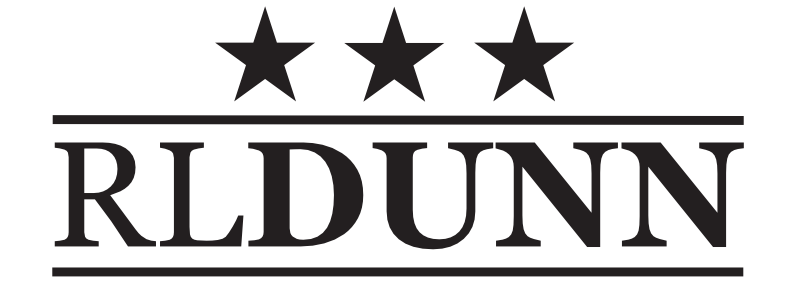This is an updated version of Zero 21: Unraveling the Performance Data – New and improved with additional data and new insights. A lot of widely disseminated but inaccurate data is debunked and – sorry, while it gets close to a definitive answer this article does not purport to be the final word.
The Mitsubishi Type Zero Carrier Fighter Model 21 was the fighter that opened the war in the Pacific over Hawaii and the Philippines. It was the primary fighter used by the Japanese navy from the beginning of the war until early 1943 and remained in front line service until well into 1944. As important as this fighter was in the Pacific air war there is little agreement in published sources about some aspects of its performance. In particular, the aircraft’s maximum speed is given by different post-war publications in a range from 316 mph to 345 mph. This disparity of nearly 30 m.p.h. is sufficiently broad that at the lower end the aircraft might be deemed relatively slow by 1942 fighter standards and at the upper end it might be considered competitive if not a speed demon. This article addresses and tries to unravel conflicting data providing insight to the question of the Zero’s maximum speed. Hopefully, the data collected and analyzed here is not “more than you really wanted to know”. Want an answer upfront? The internet (Wikipedia) says the answer is 331 m.p.h. But…Wikipedia, Bergerud and other “experts” are wrong.
CONFLICTING DATA
A review of a selection of popular aviation literature reveals the following range of maximum speed data for the Zero 21: (1) 316 m.p.h. at 16,570 ft. (Taylor, p.253); (2) 509 k.p.h. at 5,000m or 316 m.p.h. at 16,400 Ft. (General View, appended chart); (3) 279 knots or 321 m.p.h. at 20,000 ft. (Mikesh, p. 123); (4) 326 m.p.h. at 16,000 ft. (Reardon, p.113); (5) 331 m.p.h. at 14,900 ft., (Wikipedia) (6) 331.5 m.p.h. at 14,930 ft. (Francillon, p. 16); (7) 332 m.p.h. at 15,000 ft. (Bergerud, p. 683); (8) 332 m.p.h. at 16,570 ft. (Caiden, p. 158); (9) 336 m.p.h. at 19,685 m.p.h. (Green, p.46); and (10) 345 m.p.h. (Sakai, p.48). Earlier figures from wartime sources including Zero pilots in POW interrogation reports would reveal an even greater range of estimates of the Zero’s speed but the figures here are all given in publications written well after the war, several by well-respected aviation authors and historians. Only two of these publications list the source of their data. Both Reardon and Mikesh cite Informational Intelligence Summary No. 85, December 1942 as their source. Citing a source with actual test data tends to give their figures an air of authenticity. The difference between the two apparently arises because Mikesh has left speed at 15,000 ft. blank rather than adjust his table to indicate 16,000 ft. as shown in Reardon. Note that more complete identification of source material appears at the end of this article.
Aside from the Zero 21 performance, data on other aircraft is not always consistent. Various sources give as the “official” maximum speed of the P-39D as either 368 m.p.h. or 360 m.p.h. For the P-40E the “official” numbers are 362 m.p.h. or 354 m.p.h. with other figures given for “test data.”
Intelligence Summary No. 85 contains performance data on the Zero captured at Akutan Island in July 1942. The Zero was restored to flying condition and test flown at San Diego in September-October 1942. Interestingly Reardon mentions the Navy’s test report (Performance and Characteristics Trials, Japanese Fighter”, Technical Aviation Intelligence Brief #3, 4 Nov. 1942), however, he cites performance figures not from the Navy test report but from the later Army summary. A reading of Reardon’s book hints he never read nor had access to Intelligence Brief #3. The only cogent comment in the book on the condition of the captured aircraft at the time of the tests is Reardon’s question, decades after the fact, to one of the navy pilots (E. Saunders) that flew the captured Zero. Reardon asked was “the repaired airplane 100 percent?” The reply was “about 98 percent.” There is no indication Reardon probed further nor that he was aware of the details contained in Intelligence Brief #3 concerning the airplane’s aerodynamic or mechanical condition. Reardon’s book, like Intel Summary No. 85, far from cracking a mystery adds to the confusion.
The source of information on the low end of the Zero’s speed range is not given by either Taylor or in “General View”; however, it is fairly easy to track down. It closely reflects the “official” maximum speed given in a Japanese manuals on the Zero’s flight characteristics (one is JICPOA Item No. 5981, dated October 1943, captured on Kwajalein February 1944). The maximum speed given in the manual is 275 knots (a fraction above 316 m.p.h.) at 4,400m (14,430 ft.). Erroneously the manual gives the rated altitude of the Zero’s Sakae 12 engine rather than the critical altitude of the aircraft as given in other sources. A similar speed but with the altitude discrepancy corrected was given in another captured Japanese manual (CINCPAC-CINCPOA Item #9961 A). This same speed of 275 knots is mentioned by Sakai as the Zero’s speed “under normal full power conditions.”
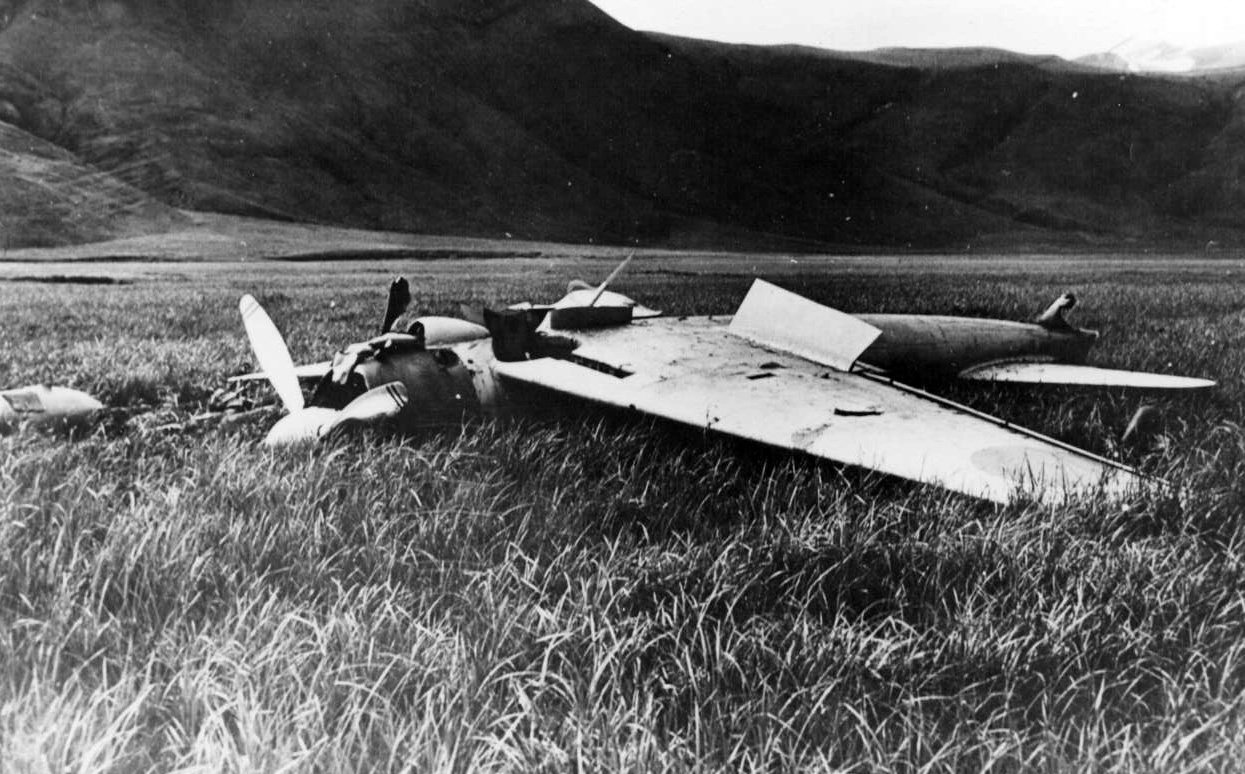
Zero crashed on Akutan Island
Of the various “maximum speed” figures cited above it seems evident that the low-end figures given by Taylor and “General View” do not reflect a true maximum speed. These figures are lower than tests results achieved with a captured Zero in less than 100% condition and may represent the aircraft’s speed under “normal full power” (military or 30 minute rated power) not over boost (“war emergency power”, typically a five minute rating is the closest U.S. terminology).
Above the low-end data that clearly do not give a true maximum speed (sources 1-2 cited above) and the U.S. test data cited in Mikesh and Reardon (sources 3-4) are figures ranging from 331.5 m.p.h. to 345 m.p.h. No specific source material is cited for these figures though Sakai’s high-end figure of 345 m.p.h. presumably is based on his recollection and years of personal experience flying the Zero 21. The problem addressed in this article is to try to validate which, if any, of these figures reflect the actual performance of the Zero as operated by Japanese pilots in combat.
A LOOK AT THE U.S. TESTS
It might be worth noting briefly that the Akutan Zero tested at San Diego was not the only captured Zero tested by the U.S. A Zero 21 captured and rebuilt in China was also briefly tested (Holloway). The maximum speed obtained in those tests was only 289 m.p.h. at 15,000 feet. However, this performance is remarkable as the aircraft was operated at 2,050 r.p.m. (it was found capable of only 2,075 r.p.m.) vice the Zero’s rated 2,500 r.p.m. and maximum take-off rating of 2,550 r.p.m. (even so the Zero out climbed a P-40K!). The aircraft was also tested at Wright Field but at no more than 2,150 r.p.m. Test figures obtained at such low revolutions bear no relationship to the aircraft’s true performance.
The San Diego tests on the Akutan Zero were conducted from September 26 to October 15, 1942. Intelligence Summary No. 85 gives no indication of tests conditions and provides only one set of data on the Zero’s speed. The information was probably disseminated because it was deemed both the best available and reasonably reliable. Intelligence Brief #3, the original source, was apparently not widely disseminated because it contained technical information of little interest to combat crews and also because it showed multiple tests had revealed differing results including figures superior to the results the authorities apparently decided were most acceptable.
The most important thing to note about the results published in Intelligence Summary No. 85, at least for this study, is that they understated the Zero’s performance. Intelligence Brief #3 (from which the Summary No. 85 data was taken) states: “It is probable that the airplane in original condition was somewhat faster than is indicated here, due to lack of flush fit at wheel well fairings and cabin enclosure in the overhauled plane, and the addition of non-specular paint.” These defects probably relate to the 98 percent condition of the airplane mentioned by Admiral Saunders in Reardon’s book. However, the test report also reveals a more profound defect in the tests. The Zero was tested at a maximum boost of 35 inches of mercury. The aircraft was operated at 38 inches of mercury for only brief periods because the engine ran rough and there was fear of losing the test aircraft. Thus the aircraft was not tested at its over boost rating (N.B. “over boost” is something of a misnomer, the 38 in. Hg boost was obtained by operating a boost shift lever that allowed and regulated this level of boost). Possibly also significant was the fact that the automatic mixture control was inoperative, and the carburetor had to be adjusted manually during the tests. Additional note: the U.S. notations 35 and 38 in. Hg reflect Japanese ratings of +150mm/35.4 in. Hg and +250mm/39.8 in. Hg. The American testers had no Japanese manual showing them the actual operating manifold pressures of the Zero. Tests of the rebuilt captured Zero 32 in Australia suffer from the same deficiency.
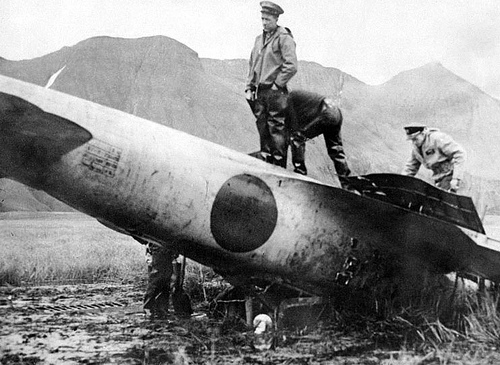
Recovery of crashed Zero
Prior to the release of Intelligence Brief #3 the Navy’s Bureau of Aeronautics sent a memorandum dated Oct. 19, 1942, to the War Department giving preliminary Zero performance data. This report gave maximum speeds at test altitudes for the Zero 7-10 m.p.h. faster than the data that was later widely disseminated. Maximum speed at 16,000 was given as 335 m.p.h. Intelligence Brief #3 stated that the earlier data was revised due to tests with improved instruments, reduction to standard conditions and corrections for compressibility.
It is interesting to note that despite the wide dissemination given to Intelligence Summary No. 85, later Technical Air Intelligence Center summaries often attributed to the Zero 21 [ZEKE Mk. 1] a slightly higher maximum speed (328 m.p.h.) and indicated this figure came from flight tests. Whether this figure was derived from later flights tests or was based on additional adjustments to the San Diego test figures is unclear. The Akutan Zero was subsequently flown in an aircraft identification training film (starring Ronald Reagan) and tested by the National Advisory Committee for Aeronautics (a preliminary study of stability and flying qualities took place with NACA instruments installed). It is possible additional tests that might modify earlier performance findings took place.
In addition to quantitative data the San Diego tests also involved comparative trials with American fighters. These comparisons allow us some ability to gauge the results obtained in San Diego against reports of actual performance in combat. The two most telling data points for this purpose are the Brief’s statement that the Grumman F4F-4 Wildcat was faster than the Zero at low level and the report that the Bell P-39D Airacobra could catch and pull away from the Zero at 20,000 feet and had a decided superiority in speed at lower altitudes (“At 10,000 feet, from a cruising speed of 220 mph indicated, the P-39 still accelerated rapidly away from the Zero”).
It was demonstrated above that the 316 m.p.h. figure is not an accurate representation of the Zero’s maximum speed as that term is commonly used in western literature. This section has demonstrated that brief U.S. flight tests in China and later at Wright Field resulted in a set of useless data and that much more extensive tests of the Akutan Zero in San Diego have deficiencies that render them less than accurate and understate the Zero’s performance.
The conclusions in the paragraph above do not aid in deciding which of the higher figures (332-345 m.p.h.) is more likely correct or whether any of the data are correct. Both to attempt that and to verify whether the San Diego tests understated the Zero’s performance, we undertake an examination of combat data.
FIELD DATA
The review of comparative performance data gathered in the field during combat in 1942 provides useful insights. The author is fully aware that data derived from operational reports cannot be controlled in the same way that careful engineering tests can be. On the other hand engineering tests conducted without key information regarding the item under test may be grossly misleading (the China Zero for example). Despite the possible existence of individual anomalies, operational data may be considered highly pertinent when a large body of relatively consistent data can be assembled.
The Bell P-39 and Grumman F4F-4 are key points of comparison and merit brief comment. The maximum speed of the P-39D is generally cited as 360 m.p.h. at 15,000 feet (Dial, p. 272); some official figures are higher. That for the F4F-4 is given as 318 m.p.h. at 19,400 feet (Taylor, p. 501) or as more pertinent here 274 m.p.h. at sea level (Baugher). The F4F-4 engaged the Zero in both carrier battles and in numerous combats over Guadalcanal operating from land bases. The P-39D (and its P-400 export version) operated against the Zero both over Guadalcanal and over New Guinea. It should be kept in mind that during the period under review Zeros flying from land bases over Guadalcanal almost always entered combat with their external fuel tanks attached. Zeros in combat over New Guinea often flew without such tanks or dropped them before combat. Without the tank the Zero would have been somewhat faster than flying with the tank attached.
A report summarizing the combat performance of the P-400 and F4F-4 against the Zero over Guadalcanal in late September 1942 stated: “At all altitudes under 10,000 feet the P-400’s can pull away from the Zero (P-400 speed about 360 m.p.h. F4F-4 about 40 m.p.h. slower). Zeros are faster than the F4F-4’s at all altitudes and more maneuverable…” (Performance).
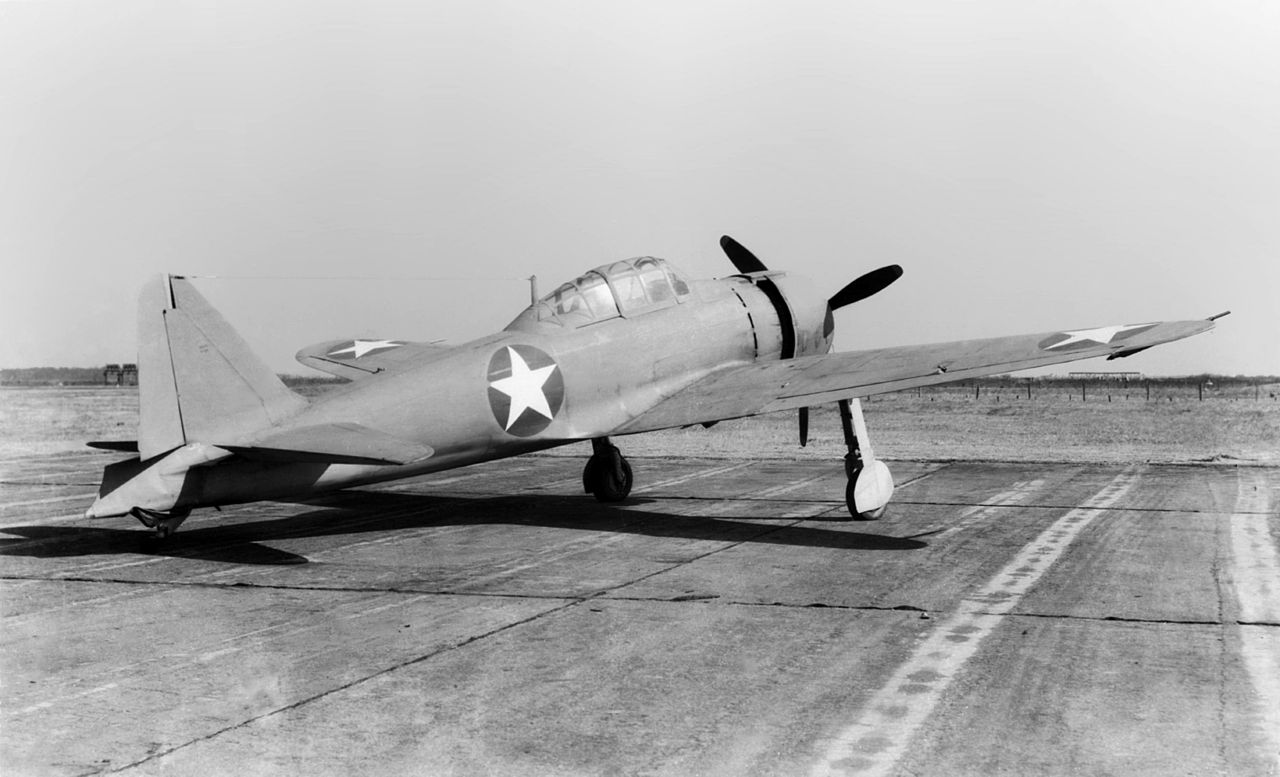
Rebuilt Akutan Zero
In a report based on questioning forty fighter pilots of VMF-121, 212 and 251 and VF-71 concerning combats in October 1942 the discussion of comparative performance was brief: “A Zero is faster, more maneuverable, and has a higher rate of climb than our F4F-4s” (Observations).
In an after action interview given in November 1942 Major John Smith, commander of VMF-223 at Guadalcanal, said little about the Zero’s performance until asked a direct question and then replied: “They had much more performance than we had. I think they did because we just couldn’t stay with them at all, and dog fight at any altitude.”
The F4F-4s of VF-5 commanded by Lt. Commander LeRoy Simpler flew against Zeros from a carrier in August 1942 and were land based on Guadalcanal during September and October 1942. Upon returning to the U.S. Simpler was apprised of the San Diego test report that said an F4F-4 was equal in speed to a Zero at low level. His comment was that the report was “flat wrong.”
The reports above are all measured pronouncements by command authorities after careful study or related by experienced combat leaders. In none of the comments in the reports cited above is there any hint that the F4F-4 could equal the Zero in speed even at low level. In fact the contrary is expressly noted. This is even though the Zeros were handicapped by an external fuel tank. The P-400’s speed advantage below 10,000 feet was also enhanced for the same reason.
Airacobras clashed with the Zero on April 30, 1942, in a low level action near Lae, New Guinea. From May to August 1942 combats between Airacobras and Zeros took place on a regular basis over New Guinea. Lt. Col. Boyd D. Wagner wrote a consensus report on the early actions. After commenting that the Zero outperformed the P-39 markedly in maneuverability and climb, Wagner commented on the relative speeds of the aircraft at low altitudes. According to Wagner: “…the Zero was able to keep up with the P-39 to an indicated 290 mph. At 325 indicated just above the water, the P-39 pulled slowly out of range.” Wagner also commented that the P-39’s performance above 18,000 feet was very poor. These comments were incorporated into a report sent to Army Air Forces Headquarters. The same report stated “P-40 slightly faster straight and level below 15,000 feet. P-40 slower above 15,000 feet.” According to “U.S. Army Aircraft, Specifications & Performance”, Assistant Chief of Staff, Intelligence (1943) the maximum speed of the P-40E was 350 m.p.h. at 13,000 feet. The maximum speed of the P-39/P-400 was 355 m.p.h. at 13,000 feet. This is less than “official” maximum speeds in other sources and presumably relates to the expected speed of a service aircraft subject to routine maintenance not a factory fresh aircraft. Other sources give different figures. From P-39D official flight test, December 1941, maximum speed at 13,800 feet, 368 m.ph. (7,525 lbs.; 1,150 h.p. ; 3,000 r.p.m.). P-39D at 15,000 feet, 360 m.p.h. (Dial); 309 m.p.h. at sea level. For the P-40E, 362 m.p.h. at 15,000 feet (Green), speed at 5,000 feet 335 m.p.h.
Combat reports in specific actions sometimes offer helpful insights into the relative performance of the Zero and Airacobra. Lt. Paul G. Brown chased a Zero at 12,000 feet. “He nearly stayed away from me at 350 mph” (Brown). In a low level action: “I indicated 320 mph straight and level at 1,000 feet. Zero kept me in range” (Royal). In another action on the same day Zeros encountered P-39s and P-400s at 21,000 feet. “Zeros stayed with the Airacobras. I dived 12,000 feet indicating 450 miles per hour and Zero stayed with me and followed me to ground level firing. Lt. Martin pulled him off me” (Price). “4 Zeros were over Kokoda and attacked us on the way home. We were barely able to out speed them at 10,000 feet. We were indicating about 350 mph in a very slight dive. Their probable speed 340 mph” (Egenes). Note: true airspeed would be higher than indicated airspeed.
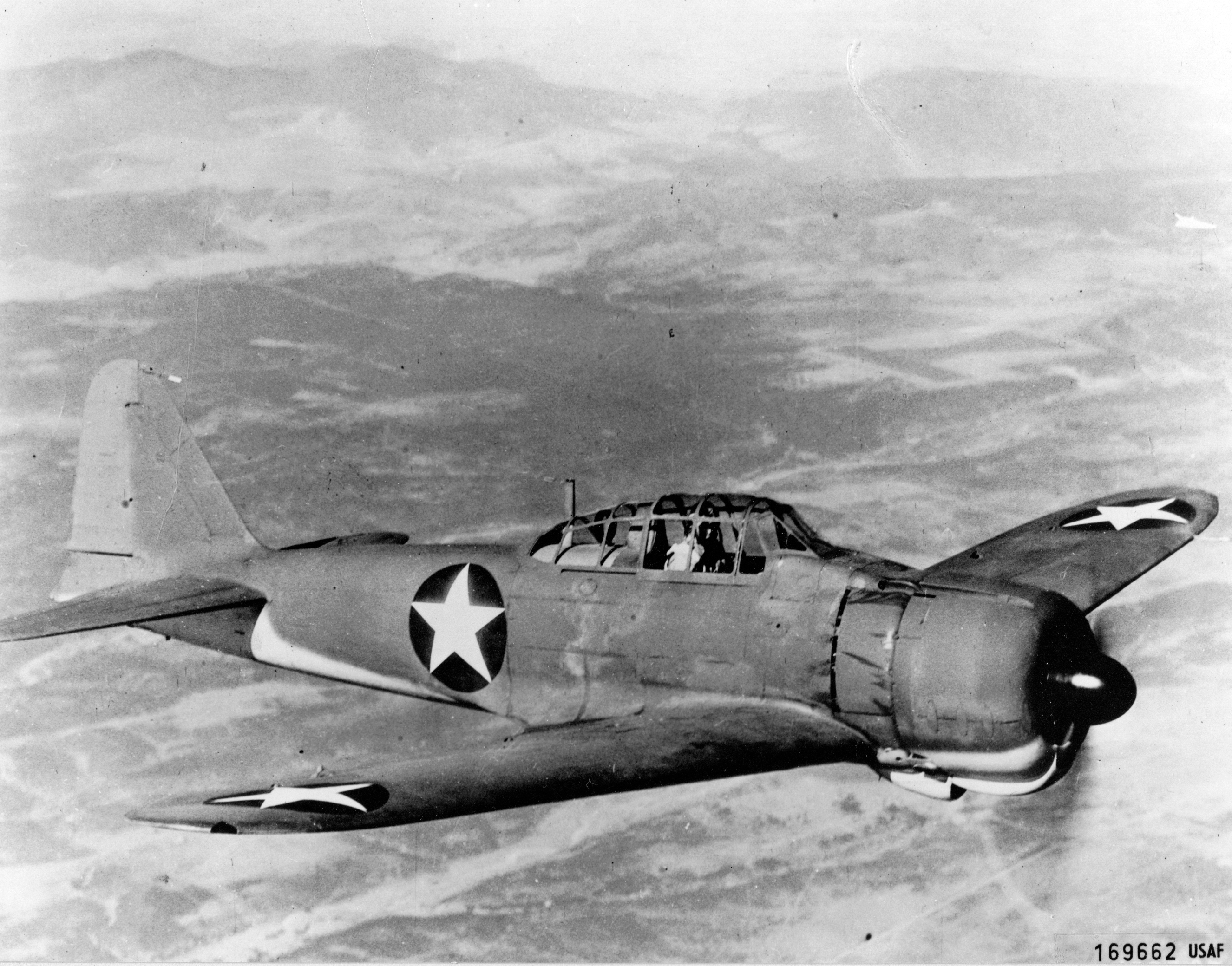
Akutan Zero in flight
This compilation of reports indicates the Zero was either equal to or close to the P-39 in speed at the altitudes of the various encounters. The P-39 was in turn up to 40 m.p.h. faster than the F4F-4 according to reports from the South Pacific Theater. There the Zero was found to be consistently faster than the F4F-4. There is a disconnect between the San Diego test results and multiple reports from the combat zone.
In an action on 22 July RAAF Kittyhawks (P-40Es) of No. 76 Squadron broke off a combat with Zeros and attempted to outrun them at near ground level. The Kittyhawks were pursued by Zeros. The Zeros stayed with the Kittyhawks but unable to close the range after fifty miles the Zeros gave up the chase. No Kittyhawks were lost although one force landed out of fuel.
Lest there be any doubt, crash intelligence reports show that the Zero 21s in use in the Southwest Pacific were close contemporaries of the Akutan Zero (No. 4593, completed 19 Feb. 1942). Many crash reports identify production dates for Zero 21s lost in the SWPA as February 1942 or earlier. Except for a single appearance by Zero 32s (30 August 1942) all the Zeros in combat over Guadalcanal during the period under review were also Zero 21s.
Given information on the comparative performance in combat why weren’t the results of the San Diego trials recognized as inaccurate earlier? Possibly because results of dynamometer testing a captured Sakae 12 engine could be viewed as supporting the San Diego data. U.S. test results assessed engine performance as: take-off power 820 h.p. at 2,600 r.p.m., at sea level and 40 in. Hg. Maximum emergency power (1 min.) was 925 h.p. at 2,600 r.p.m., at 11,500 ft., 40 in. Hg. Japanese ratings for the engine were: take-off 930 h.p. at 2,550 r.p.m. at sea level, at 250mmm (39.8 in. Hg). Rated 100% (30 min.) 940 h.p., at 13,750 ft., at 150mm (35.85 Hg.). Data summarized in Allied Air Forces SWPA Intelligence Summary No. 206 (May 1944). Note the disconnect. No Japanese official figures for operation at +250mm at altitude are given in the manual. However, late in the war Allied intelligence filled this gap with a reassessment: Sakae 12 “emergency” rating was given as 1,020 h.p. at 2,550 r.p.m. at 11,500 ft. and 40 in. Hg.
CONCLUSION
The field data reviewed by this study indicate that Zeros operated by the Japanese performed relatively better against the Wildcat and Airacobra than did the Zero tested at San Diego. If the comparative performance of the San Diego Zero understated the performance of a typical Japanese operated Zero, this strongly indicates the quantitative performance was also understated. This tends to verify the conclusions reached in the section reviewing U.S. test results. The reasons for this seem obvious. The San Diego Zero was in less than perfect aerodynamic condition and was not operated at its optimum engine capacity or with automatic mixture control engaged. The figures cited in Summary No. 85 and repeated by Mikesh and Reardon are inaccurate and too low to represent the true performance of the Zero in Japanese operations.
The author has established the probable basis for some of the performance figures higher than the San Diego test results (332-336 m.p.h.) but lower than Sakai’s (sources 5-7 in the section Conflicting Data). They are close to the first test results obtained at San Diego (335 m.p.h.), but those results were not deemed reliable. Most of the other figures are adjustments or extrapolations of the San Diego results.
Sakai distinguished between normal full power speed (316 m.p.h.) and over boost (345 m.p.h.). His normal full speed is the same as the Zero’s maximum speed given in the captured Japanese manual. The San Diego test report, while revealing that the San Diego Zero was not tested at over boost, does confirm Sakai’s assertion that such a rating was available. Sakai has credibility that is primarily based on his personal familiarity with the Zero 21 aircraft. These additional factors only bolster his credibility.
The evidence assembled in this report strongly indicates that Sakai’s version of the Zero’s maximum speed (345 m.p.h.) is highly credible and probably the correct one. However, there is additional evidence that not only supports that conclusion but may suggest an even higher speed was possible. Captured Zero 21 pilots gave a variety figures for the Zero’s maximum speed during their interrogations. Some were well below official Japanese figures. A few were higher. The first captured Zero 21 pilot interrogated at Port Moresby gave the Zero’s maximum speed as 600 k.p.h. (ca. 372 m.p.h.). The report of the second Zero pilot interrogated there gave the maximum speed as 270 k.p.h. possibly an error for 270 knots by either the prisoner, interpreter or recorder. A Zero POW interrogated on Guadalcanal stated maximum speed was 320 knots (ca. 368 m.p.h.). Another Zero 21 pilot interrogated on Guadalcanal gave the Zero’s maximum speed as 270 knots with full belly tank.
Additional data tending to support 345 m.p.h. is found in an intelligence document issued in 1944: “Performance data given for the ZEKE Mk. 1 [Allied code name for the Zero 21] was obtained in actual flight tests. Although emergency speed obtained in tests was 328 m.p.h., calculations indicate a maximum speed of about 345 m.p.h. as possible for a short period of time” (Intelligence Summary No. 44-11). In November 1943 a Pacific Fleet Air Operations Memorandum pegged the maximum speed of the Zero with Sakae 12 engine as 299 knots (343.5 m.p.h.) at 12,000 feet. A month later the Joint Intelligence Agency included in one of its reports that the ZEKE Mk. 1 with Sakae 12 engine had a maximum speed of 345 m.p.h. at 12,000 feet. The “short period” mentioned above was officially only one minute per the Japanese manual captured at Kwajalein (JICPOA Item #5981) but the way the Zero was used in combat suggests the Japanese pilots used over boost for longer periods. Japanese tests of the Sakae 12 engine at manifold pressures above the take-off rating of 250mm (2,550 r.p.m.) suggest much more than one minute of “war emergency power” was available. The engine was tested at 300mm, 350mm and 400mm manifold pressure. At 400mm sustained detonation (knock) occurred after a little more than a minute. However, at 300mm boost the engine operated for four and half minutes before continuous knock occurred. This clearly suggests that the Sakae 12 could be operated at 250mm boost and 2,550 r.p.m. for much longer than 4.5 minutes. The fifty mile chase of Kittyhawks mentioned above suggests over boosted speed could be maintained for ten minutes or more. Just as Sakai’s book indicates Japanese pilots could and would routinely use over boost in sustained combats. They may have gotten more than 345 m.p.h. in some cases.
For additional information on detonation or knock in internal combustion engines see Jimmy Doolittle, Hap Arnold, and the Battle of Britain: The 100-Octane Story. The 100-octane story (Richard Dunn) (warbirdforum.com)
Wartime reports:
“Performance and Characteristics Trials, Japanese Fighter” Technical Aviation Brief #3, Aviation Intelligence Branch, Navy Department (4 Nov. 42) (extract)
“Flight Characteristics of the Japanese Zero Fighter Zeke” Informational Intelligence Summary No. 85, Intelligence Service, U.S.A.A.F., Dec. 42 (rev. Mar. 43)
Memorandum of Oct. 19, 1942, Bureau of Aeronautics, Navy Department to War Department, “Preliminary Zero Data, 10 Oct. 42 (revised)”
Captured Document (Zero Flight Manual), Joint Intelligence Center-Pacific Ocean Area Item No. 5981, Kwajalein, received 19 Feb. 1944
“Zero Test – Mitsubishi Type O Evaluation, Feb. 1943” HQ, 23rd Fighter Group, 6 Feb. 1943 (“Holloway”)
“Observations of Marine Fighter Pilots at Guadalcanal October 16 to October 31, 1942” (Baugher), United States Pacific Fleet, South Pacific Force, Naval Air Combat Intelligence (extract) (“Observations”)
“Performance of P-400 and F4F-4 in Guadalcanal Area” (Commander, Aircraft, South Pacific Force, 28 Sep 42) (“Performance”)
Interview, Major John Smith (Navy Bureau of Aeronautics Nov 42)
Interview, Lt. Cdr. LeRoy Simpler (Navy Bureau of Aeronautics Feb 43)
“Report on first action against Japanese by P-39 type airplane” (B.D. Wagner May 42)
Combat Reports (RAAF Form A.108A) for Lt. P.G. Brown, 36 FS (27 May 42); Lt. F. Royal, 39 FS (4 Jul 42); Lt. J.C. Price, 39 FS (4 Jul 42); and, Capt. E. L. Egenes, 40 FS (6 Jul 42) (cited by pilot’s last name)
Informational Intelligence Summary No. 44-11, Mar 1944, Assistant Chief of Air Staff (Intelligence)
Allied Air Forces, Southwest Pacific Area, Intelligence Summary No. 206 (10 May 1944)
Books and other sources (generally cited by author’s name):
Baugher “Grumman F4F Wildcat” online
Bergerud, Fire In The Sky, West View Press 2000
Caiden, Zero Fighter, Ballentine (NY 1969)
Dial, “The Bell P-39 Airacobra” Aircraft In Profile vol. 7, Doubleday (NY 1970)
Francillon, “The Mitsubishi A6M2 Zero-Sen” Aircraft in Profile vol. 6, Doubleday (NY 1969)
General View of Japanese Military Aircraft in the Pacific War, compiled by the staff of “Airview” Kanto-sha (Tokyo 1956)
Green, Warplanes of the Second World War, Fighters vol. 3 & 4, Doubleday (NY 1961)
Mikesh, Zero, Motorbooks International (Osceola, WI 1994)
Reardon, Cracking the Zero Mystery, Stackpole (Harrisburg PA 1990)
Sakai et al, Samurai, Ballentine (NY 1958), Naval Institute Press (2010)
Taylor, Combat Aircraft of the World, Putnam (NY 1969)
